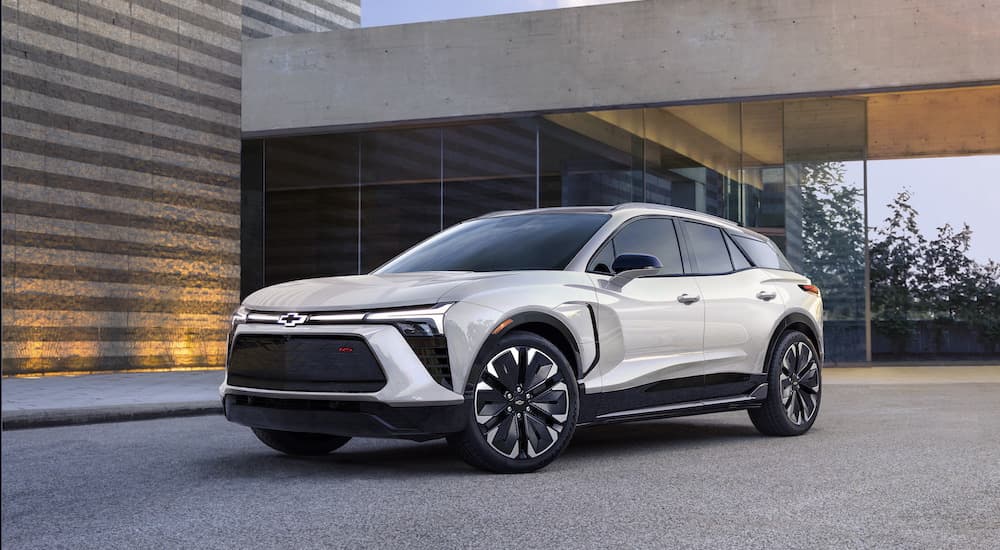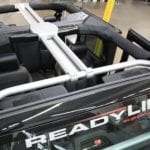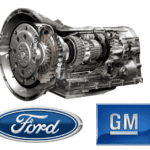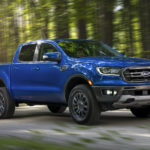In early 2021, GM made a pledge that would drastically shift the direction of the corporation: to achieve carbon neutrality by 2040. To reach this lofty target, all of their vehicles powered by gasoline or diesel fuel will be supplanted by zero-emissions vehicles by 2035. This plan has started to materialize in the form of new vehicles, like the Blazer EV, HUMMER EV, and Silverado EV, all of which are built on GM’s Ultium platform. For a corporation like GM, which made a name for itself through gas-dependent trucks, SUVs, and sports cars, a move like this requires redesigned products, manufacturing, and branding on a massive scale. Ultium was born out of this effort and now aims to revolutionize GM vehicles over the next few decades. Before you start searching for a Blazer EV dealer, let’s take a look at what makes Ultium a game-changer in the all-electric automotive industry.

What Is Ultium?
Ultium is GM’s brand of batteries and drive units that make up the platform their EVs are built on. Branding often serves little purpose outside of differentiating one company’s product from competitors’ by name, but in the case of Ultium, GM has managed to give pre-existing technology its own spin with a unique and innovative design.
Simply put, a battery is a device that stores chemical energy and converts it to electricity through a chemical reaction. They have a negatively-charged anode and a positively-charged cathode which exchange electrons to either discharge or charge the battery. Most automakers use lithium-ion batteries in their EVs, so the cathode combines lithium and other metals. Lithium is the third element on the periodic table and is a lustrous, light silver.
It’s the lightest and least-dense metal, as well as highly reactive, so it has no problem shedding electrons. These properties are what make lithium-ion batteries ideal for EVs. When compared to other common types of rechargeable batteries, like lead acid, a lithium-ion battery can produce more volts while weighing less and taking up less space. This translates to a whole slew of benefits in the automotive realm, like improved efficiency and more room for passengers.
The other metals that make up the cathode are also worth mentioning. Cobalt, number 27 on the periodic table, was historically the primary element found in cathodes because it makes for a stable battery. Automakers are moving away from it because it’s not only a supply chain risk but the catalyst behind a humanitarian crisis. Cobalt is procured as a byproduct of nickel and copper mining, most of which comes from the Copperbelt in the Democratic Republic of Congo. A number of human rights violations have been reported at these mines, like the use of child labor, dangerous working conditions causing fatal accidents, and rampant corruption that has led to the exploitation of local workers.
To combat this, automakers are introducing other metals to their batteries to reduce dependency on cobalt. GM has its own particular and proprietary blend of metals (Nickel, Cobalt, Manganese, and Aluminum) in its cathodes that have reduced cobalt content by 70%. GM didn’t write or re-write the book on batteries; theirs operate on the same basic principles as the one in your phone. The beauty of Ultium lies in its versatility, which GM explains using a delicious analogy; battery modules (groupings of battery cells) can be stacked vertically like toast or horizontally like pancakes.
While other automakers use cylindrical or prismatic batteries that are limited in the way they can be oriented and result in wasted space and less flexibility, Ultium’s design allows battery modules to be configured into multiple different battery packs (the final shape of the battery system). In addition, Ultium utilizes a battery management system that is almost completely wireless. This simplicity adds to the scalability of the technology across different product types. There’s no complex rewiring required for every vehicle built on the platform.
The Perks of Ultium
This flexible design comes with several perks. For one, it gives GM’s engineers more control over the battery pack’s location, protecting it from damage while optimizing things like weight distribution and maximizing the vehicle’s interior space. Secondly, if a vehicle has higher or lower power requirements, modules can be added to or removed from the battery pack with relative ease. This allows Ultium to be used across all GM brands, from the 340-hp Cadillac Lyriq to the 1,000-hp HUMMER EV.
The fact that Ultium can be configured to power vehicles with vastly different performance needs has another perk: lowered costs. The technology and production of gasoline vehicles have been improved for over 100 years; EVs are newer territory. The mass output of zero-emissions vehicles can’t happen overnight because they’re expensive to design and manufacture. Some automakers successfully stymie this by limiting the variety of EVs they produce, like Tesla. Ultium will enable GM to manufacture a wide range of different EVs without the need to develop an entirely new platform for each one. This variety creates more options for buyers, of course, but should ultimately help keep EVs affordable, too.
What is Carbon Neutrality?
Carbon neutrality can take a couple of different forms. It can mean a person or entity reducing their carbon emissions down to zero or, for large companies like GM, it can mean taking steps to decarbonize while offsetting the emissions they create by investing in emission reduction efforts outside of the company.
For their part, GM has pledged to achieve carbon neutrality for both their products and operations by 2040. They plan to invest $27 billion in their EV fleet by 2025 and eliminate tailpipe emissions from the entirety of their light-duty lineup by 2035. From there, GM is slated to manufacture 30 new EVs, so the large majority of vehicles produced by Chevrolet, Buick, GMC, and Cadillac will be powered electrically. Ultium will be an instrumental asset in achieving this goal.
Developing a platform to build their EVs on is just one part of the process; factories need to be redesigned as well. The shining example of this is Factory ZERO. It was converted to a plant fully dedicated to EV manufacturing from the formerly-known Detroit-Hamtramck plant, originally established in 1985. It’s slated to be 100% powered by renewable energy by 2023, leading the way for all of GM’s other facilities based in the United States, which will run solely on renewable energy by 2030.
Together with LG Energy Solutions, GM is building a number of plants for battery and EV manufacturing in the United States. American-based manufacturing is beneficial for several reasons. It leads to the creation of new jobs and supports local economies where the factories are built. It also reduces the risk of unethical business practices. As demonstrated by cobalt, manufacturing overseas adds uncertainty and volatility to the production process. Cobalt mining isn’t manufacturing per se, but the same principles apply. Companies are less likely or are completely unable to enforce basic standards for working conditions when it’s not happening on their own soil. Having factories based in the States encourages large companies to be more accountable.
Building a Better Future
It often feels like corporations are shortsighted in their goals, letting profit take priority over ethics, human lives, and the quality of our collective future. It’s exciting to see a company like GM adopting a business model that focuses on profitable sustainability spanning across decades. If one of the world’s largest and oldest automakers can successfully implement such a seismic shift in their product and manufacturing, other companies can certainly do it as well.





